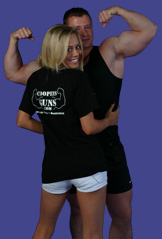3 - The importance of early management
The early management of soft tissue injuries can be either extremely effective or, if inappropriately applied, may be damaging. The course of injury can be modified by the effective and timely use of therapeutic techniques and modalities. For example, chartered physiotherapists, who are frequently the first of the health care team to see an injured athlete, are in an excellent position to prevent the development of chronic oedema which can markedly interfere with the later stages of treatment, lead to a poor rehabilitation outcome and increase the potential for recurrence of injury. Application of the appropriate modality at a particular stage in the healing process can act to prevent undue complications and can help save much time that might otherwise be spent unnecessarily in a prolonged period of convalescence.
3.1 - Tissue response to injury
In order to develop an appropriate early management programme, it is necessary to have an understanding of the concepts of the response to injury, the mechanisms of healing and those processes that may be affected by what is, or is not, included in the management programme. Once the concepts of tissue healing and repair are appreciated, it is easier to establish sound, principled management programmes. These programmes must be based on biochemical time-scales and must also consider the healing tissue’s ability to withstand specific stresses and how it optimally responds to these stresses.
When the body sustains an injury, it undergoes an organised and consistent process at the site of injury in its attempts to heal the area. Injury is the medical term for cellular damage. In a sprain, strain, bruise or crush, the local network of blood vessels is damaged, and oxygenated blood can no longer reach the tissues, causing some cells to die. The damaged blood vessels bleed, so the injured tissue contains dead cells, extracellular substance and extravasated blood (Evans, 1980). Although there may be some differences among the various structures, due to differences in vascularity, the overall process is essentially the same whether the injury is to ligament, tendon or muscle tissue. The primary differences in acute trauma are determined by the size and severity of injury and whether the injury must heal by primary or secondary intention.
There are three phases in the healing process:
- the inflammatory phase
- the proliferative phase
- the maturation or remodelling phase
Although these phases are defined separately in the literature in terms of the type of cellular activity occurring at that time (Evans, 1980; Houglum, 1992), they are not totally discrete and there is of necessity a degree of overlap between them. The essential period of concern for these guidelines is the inflammatory phase, although the events occurring in the early part of the proliferative phase are also of interest.
The inflammatory phase may last anything up to six days; different researchers have suggested different durations of this phase, and although the duration will of necessity be related to the severity of the injury, the lack of consensus on the precise duration of this phase is more a reflection of the overlap and gradation of the phases of the healing process than imprecise research investigations (Houglum, 1992).
The cardinal signs of inflammation are Calor (heat), Rubor (redness), Dolor (pain) and Tumor (swelling).
Calor and Rubor
Caused by the opening up of thousands of tiny local blood vessels in response to the interaction between cellular and chemical components. Inside the dilated capillaries, the rate of blood flow slows, and by four hours after injury, white blood cells are beginning to pass through the vessel walls. The heat and redness take a few hours to develop. The increase in local tissue temperature increases the metabolic demands of the area that also results in vasodilation.
Dolor
Pain is caused by chemicals released at the
